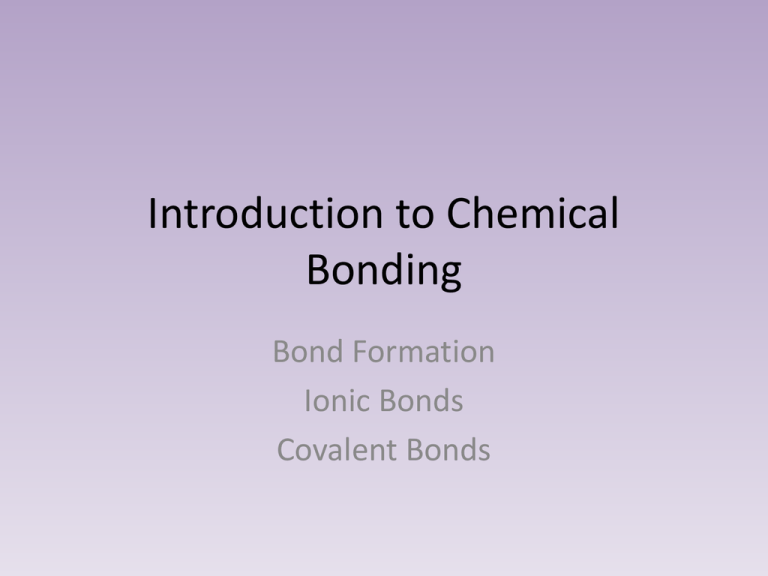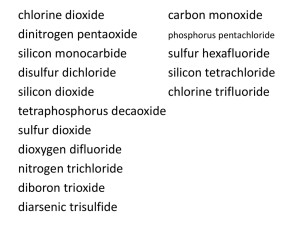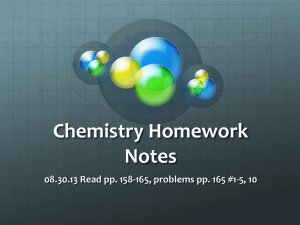Intro to Ionic Bonding
advertisement

Introduction to Chemical Bonding Bond Formation Ionic Bonds Covalent Bonds Chemical Bonds • An attractive force that holds atoms together • Formation of chemical bonds involves energy – Bonds will form if atoms have lower energy than when they are separated – Bond formation is (generally) an exothermic process • Bonding deals with valence electrons – Electrons in the highest energy level Lewis Structures • Symbolic representations of elements that show the valence electrons • Elemental symbol and the valence electrons represented by dots Valence Electrons & Noble Gases • Noble gases are unreactive – They don’t form compounds with other elements • Noble Gases already have a stable electron configuration • The highest energy level of the atom is full and it will not form any bonds – Does this always mean there are eight electrons? – No → Helium Valance Electrons and Chemical Properties • The number of valence electrons determines the chemical properties of an atom • Atoms are trying to get to eight valance electrons and they will take the shortest route to get there – “Octet Rule” – Could mean gaining electrons, could mean loosing electrons – “1,2,3,4,5,6,7,8,1,2,3,4…” Ion Formation and the Octet Rule • Octet Rule • Atoms will gain or lose electrons to have a full outer shell (valence shell) – Metals lose valence electrons so that the electron configuration becomes like the previous noble gas – Non-metals gain electrons to become like the next noble gas • Exceptions exist for small atoms – Duet Rule How does the bond between sodium & chlorine form? Cl Sodium has one valence electron. It’s looking to lose it Na Chlorine has seven valence electrons. It’s looking to gain one Ion Formation and the Octet Rule • Main group metals lose all their valence electrons to form cations – This loss of electrons is called oxidation • Non-metals gain electrons to achieve the noble gas configuration and form anions – This gain of electrons is called reduction • “OiL RiG” – Oxidation is loss, Reduction is gain How does the bond between sodium & chlorine form? Na Cl Sodium now has 11 protons & 10 electrons. It has a positive charge. It is a cation Chlorine now has 17 protons & 18 electrons. It has a negative charge. It is an anion Ionic Bond • Negative charges are attracted to positive charges • Negative anions are attracted to positive cations • The result is an ionic bond – Ionic Bonds involve the transfer of electrons from a metal to a non-metal How does the bond between sodium & chlorine form? Na Cl The negative charge on the chloride ion and the positive charge on sodium ion attract each other and form an ionic bond Structure of an Ionic Solid • Ionic Compounds form a three-dimensional network called a crystal (or crystal lattice) • Each ion is attracted to multiple ions of the opposite charge Properties of Ionic Compounds • High melting point – Don’t easily change to liquids (or gases) • Solids → Poor conductors • Liquids → Good Conductors • Shatters when breaks







